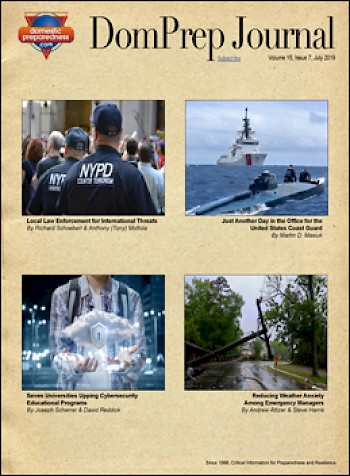

Combating Threats – Both Domestic & Global
Catherine L. Feinman
July 31, 2019
Disaster planners recognize the need to build interagency, interdisciplinary support to combat
widespread disasters with far-reaching consequences. However, gaining such buy-in can be challenging –
especially when stakeholders do not recognize the threat to their communities or do not understand the
roles they can and should play in mitigating such threats. This is important considering that an
international threat can quickly become a local problem and a local threat can transform into an
international concern.

Local Law Enforcement for International Threats
Richard Schoeberl and Anthony (Tony) Mottola
July 24, 2019
According to a recent United Nations Security Council report, the number of Islamic State (IS) attacks is down over the past year. However, there is still no doubt that the IS remains a threat – both globally and domestically – particularly as it transforms into a more covert terrorist organization. Domestically, the IS remains a concern for law enforcement agencies. However, the threats have evolved from groups to individuals – radicalized from the array of propaganda and plethora of ideologies found on the internet.

Just Another Day in the Office for the United States Coast Guard
Martin D. Masiuk
July 17, 2019
DomPrep’s Publisher, Martin (Marty) Masiuk recently conducted a podcast interview with DomPrep Advisor CDR Joseph J. Leonard Jr. (USCG, ret.) to hear his reaction on this extraordinary drug seizure. Joe then elaborates on the many missions that the Coast Guard conduct every day.

Reducing Weather Anxiety Among Emergency Managers
Andrew (Andy) Altizer and Steve Harris
July 10, 2019
Imagine this scenario. A tornado watch has been in effect for the past six hours. The severe thunderstorm warning expires as the squall line passes over the area, which

